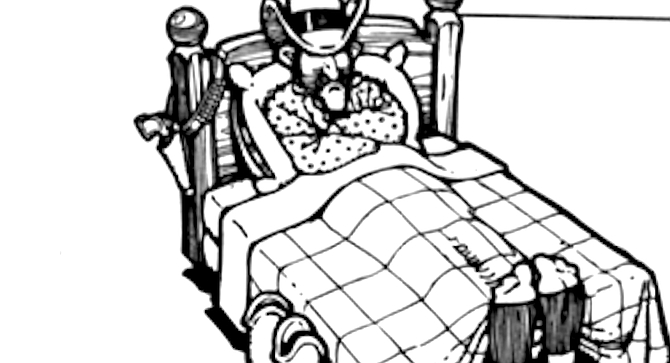 Facebook
Facebook
 X
X
 Instagram
Instagram
 TikTok
TikTok
 Youtube
Youtube

A queen-size bed is 60 inches wide by 80 inches long. A standard king-size bed is 78 inches wide by 80 inches long. You gain a whole foot and a half of stretch-out room. A “Cal king” or “western king” bed is 72 inches wide by 84 inches long. How did this happen? Do the people who make mattresses think that we Californians are much skinnier and taller than the rest of the country? — B., Rancho Bernardo
A classic story of bedding enterprise, according to the International Sleep Products Association. Before World War II, snoozers had their choice of twin- or full-size beds. Period. But with the post-war economy humming, a vendor in Los Angeles gambled that what America longed for was a big bed to go in those big houses being built for vets and their wives. Nobody’s sure why, but the mattress mogul decided his new product should be an even six feet wide by seven feet long (72 inches by 84 inches). The Cal king. The rest of the country liked the big-bed idea but figured it was more sensible to make the mattress 78 inches wide and 80 inches long; 78 inches was exactly double the width of a full-bed box spring, and the 80-inch length required the addition of just two rows of coils to the full-size mattress. In other words, it would be cheaper and easier to make. So the Cal king, the original king-size bed, was pretty much a California-only product. The rest of the country got the wider, shorter standard (“eastern”) king. (Virtually all mattresses, even national brands, are made close to the area where they’re sold. No manufacturer spends the money to ship mattresses around the country.) Sheet and blanket makers have grumbled for decades, as have consumers who’ve moved their Cal kings to Atlanta or Akron and had to special-order their bedding. The Cal king probably will be phased out in the near future. But I s’pose you could say it was the king-size mattress that put the “boom” in “baby boom.”


A queen-size bed is 60 inches wide by 80 inches long. A standard king-size bed is 78 inches wide by 80 inches long. You gain a whole foot and a half of stretch-out room. A “Cal king” or “western king” bed is 72 inches wide by 84 inches long. How did this happen? Do the people who make mattresses think that we Californians are much skinnier and taller than the rest of the country? — B., Rancho Bernardo
A classic story of bedding enterprise, according to the International Sleep Products Association. Before World War II, snoozers had their choice of twin- or full-size beds. Period. But with the post-war economy humming, a vendor in Los Angeles gambled that what America longed for was a big bed to go in those big houses being built for vets and their wives. Nobody’s sure why, but the mattress mogul decided his new product should be an even six feet wide by seven feet long (72 inches by 84 inches). The Cal king. The rest of the country liked the big-bed idea but figured it was more sensible to make the mattress 78 inches wide and 80 inches long; 78 inches was exactly double the width of a full-bed box spring, and the 80-inch length required the addition of just two rows of coils to the full-size mattress. In other words, it would be cheaper and easier to make. So the Cal king, the original king-size bed, was pretty much a California-only product. The rest of the country got the wider, shorter standard (“eastern”) king. (Virtually all mattresses, even national brands, are made close to the area where they’re sold. No manufacturer spends the money to ship mattresses around the country.) Sheet and blanket makers have grumbled for decades, as have consumers who’ve moved their Cal kings to Atlanta or Akron and had to special-order their bedding. The Cal king probably will be phased out in the near future. But I s’pose you could say it was the king-size mattress that put the “boom” in “baby boom.”
Comments